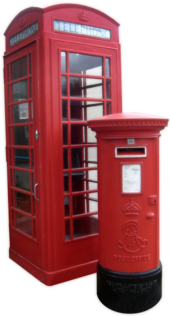
The standard circulating coinage of the United Kingdom, British Crown Dependencies and British Overseas Territories is denominated in pennies and pounds sterling, and ranges in value from one penny sterling to two pounds. Since decimalisation, on 15 February 1971, the pound has been divided into 100 (new) pence. Before decimalisation, twelve pence made a shilling, and twenty shillings made a pound.

The Union Jack, or Union Flag, is the de facto national flag of the United Kingdom. Although no law has been passed making the Union Flag the official national flag of the United Kingdom, it has effectively become such through precedent. It is sometimes asserted that the term Union Jack properly refers only to naval usage, but this assertion was dismissed by the Flag Institute in 2013 following historical investigations. The flag has official status in Canada, by parliamentary resolution, where it is known as the Royal Union Flag. It is the national flag of all British overseas territories, being localities within the British state, or realm, although local flags have also been authorised for most, usually comprising the blue or red ensign with the Union Flag in the canton and defaced with the distinguishing arms of the territory. These may be flown in place of, or along with the national flag. Governors of British Overseas Territories have their own personal flags, which are the Union Flag with the distinguishing arms of the colony at the centre. The Union Flag also appears in the canton of the flags of several nations and territories that are former British possessions or dominions, as well as in the flag of the US State of Hawaii, which has no such connection.

Britannia is the national personification of Britain as a helmeted female warrior holding a trident and shield. An image first used in classical antiquity, the Latin Britannia was the name variously applied to the British Isles, Great Britain, and the Roman province of Britain during the Roman Empire. Typically depicted reclining or seated with spear and shield since appearing thus on Roman coins of the 2nd century AD, the classical national allegory was revived in the early modern period. On coins of the pound sterling issued by Charles II of England, Scotland, and Ireland, Britannia appears with her shield bearing the Union Flag. To symbolise the Royal Navy's victories, Britannia's spear became the characteristic trident in 1797, and a helmet was added to the coinage in 1825.

The British decimal ten pence coin is a denomination of sterling coinage worth one-tenth of a pound. Its obverse has featured the profile of Queen Elizabeth II since the coin's introduction in 1968, to replace the florin coin in preparation for decimalisation in 1971. It remained the same size as the florin coin until a smaller version was introduced 30 September 1992, with the older coins being withdrawn on 30 June 1993. Four different portraits of the Queen have been used on the coin; the latest design by Jody Clark was introduced in 2015. The second and current reverse, featuring a segment of the Royal Shield, was introduced in 2008.

The British two pound (£2) coin is a denomination of sterling coinage. Its obverse has featured the profile of Queen Elizabeth II since the coin’s introduction. Three different portraits of the Queen have been used, with the current design by Jody Clark being introduced in 2015. The reverse design features Britannia.

Her Majesty's Yacht Britannia, also known as the Royal Yacht Britannia, is the former royal yacht of the British monarchy. She was in service from 1954 until 1997. She was the 83rd such vessel since King Charles II acceded to the throne in 1660, and is the second royal yacht to bear the name, the first being the racing cutter built for the Prince of Wales in 1893. During her 43-year career, the yacht travelled more than a million nautical miles around the world. Now retired from royal service, Britannia is permanently berthed at Ocean Terminal, Leith in Edinburgh, Scotland, where it is a visitor attraction with over 300,000 visits each year.

The royal arms of England are the arms first adopted in a fixed form at the start of the age of heraldry as personal arms by the Plantagenet kings who ruled England from 1154. In the popular mind they have come to symbolise the nation of England, although according to heraldic usage nations do not bear arms, only persons and corporations do. The blazon of the arms of Plantagenet is: Gules, three lions passant guardant in pale or armed and langued azure, signifying three identical gold lions with blue tongues and claws, walking past but facing the observer, arranged in a column on a red background. Although the tincture azure of tongue and claws is not cited in many blazons, they are historically a distinguishing feature of the arms of England. This coat, designed in the High Middle Ages, has been variously combined with those of the Kings of France, Scotland, a symbol of Ireland, the House of Nassau and the Kingdom of Hanover, according to dynastic and other political changes occurring in England, but has not altered since it took a fixed form in the reign of Richard I of England (1189–1199), the second Plantagenet king.
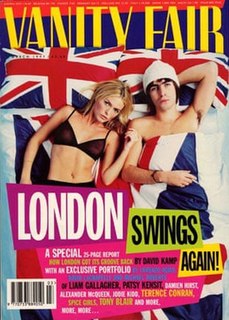
Cool Britannia was a name for the period of increased pride in the culture of the United Kingdom throughout the mid and second half of the 1990s, inspired by Swinging London from 1960s pop culture. This loosely coincided with John Major's conservative government and the 1997 United Kingdom general election where Tony Blair's New Labour government won in a landslide. The success of Britpop and musical acts such as the Spice Girls, Blur, and Oasis led to a renewed feeling of optimism in the United Kingdom following the tumultuous years of the 1970s and 1980s. The name is a pun on the title of the British patriotic song "Rule, Britannia!"
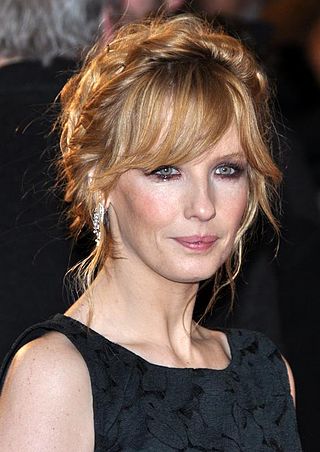
Jessica Kelly Siobhán Reilly is an English actress. She first appeared on screen in 1995 on the series The Biz. Her other television work includes starring roles in the British crime drama Above Suspicion (2009–2012), the American psychological medical drama Black Box (2014), the American anthology crime drama True Detective (2015) and the historical fantasy drama Britannia (2018). Since 2018, she has played Beth Dutton on the neo-Western drama series Yellowstone, opposite Kevin Costner.

The Crown of Scotland is the crown that was used at the coronation of the monarchs of Scotland. It is the oldest surviving crown in the British Isles and dates from at least 1503, although it has been claimed that the circlet at its base incorporates the original circlet of gold that was worn by Robert the Bruce at his coronation in 1306. Remade in its current form for James V in 1540, the crown is the centrepiece of the Honours of Scotland. It was last used to crown Charles II in 1651, and since then it has been used at many major royal ceremonial events.
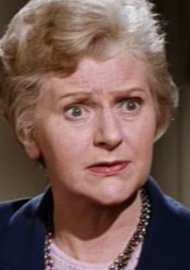
Sheila Keith was a British character actress, active in theatre, films and TV. She was born to Scottish parents in London while they were visiting the city and brought up in Aberdeen, Scotland. Longing to act, she trained at the Webber Douglas Academy of Dramatic Art in London.

A cultural icon is a person or an artifact that is identified by members of a culture as representative of that culture. The process of identification is subjective, and "icons" are judged by the extent to which they can be seen as an authentic symbol of that culture. When individuals perceive a cultural icon, they relate it to their general perceptions of the cultural identity represented. Cultural icons can also be identified as an authentic representation of the practices of one culture by another.

The Inverness cape is a form of weatherproof outer-coat. It is notable for being sleeveless, the arms emerging from armholes beneath a cape. It has become associated with the fictional detective Sherlock Holmes.

The prehistoric landmark of Stonehenge is distinctive and famous enough to have been frequently referenced in popular culture. The landmark has become a symbol of British culture and history, owing to its distinctiveness and its long history of being portrayed in art, literature, and advertising campaigns; and in more recent media formats such as television, film, and computer games. This is in part because the arrangement of standing stones topped with lintels is unique: not just in the British Isles, but in the world.
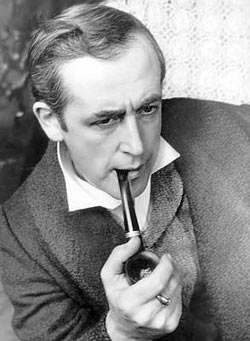
The Adventures of Sherlock Holmes and Dr. Watson is a series of Soviet television films portraying Arthur Conan Doyle's fictional English detective, starting in 1979. They were directed by Igor Maslennikov.

The following outline is provided as an overview of and topical guide to the United Kingdom of Great Britain and Northern Ireland; a sovereign country in Europe, commonly known as the United Kingdom (UK), or Britain. Lying off the north-western coast of the European mainland, it includes the island of Great Britain—a term also applied loosely to refer to the whole country—the north-eastern part of the island of Ireland and many smaller islands.

The national symbols of England are things which are emblematic, representative or otherwise characteristic of England or English culture. Some are established, official symbols; for example, the Royal Arms of England, which has been codified in heraldry. Other symbols may not have official status, for one reason or another, but are likewise recognised at a national or international level.

The national symbols of Wales include various official and unofficial images and other symbols.
